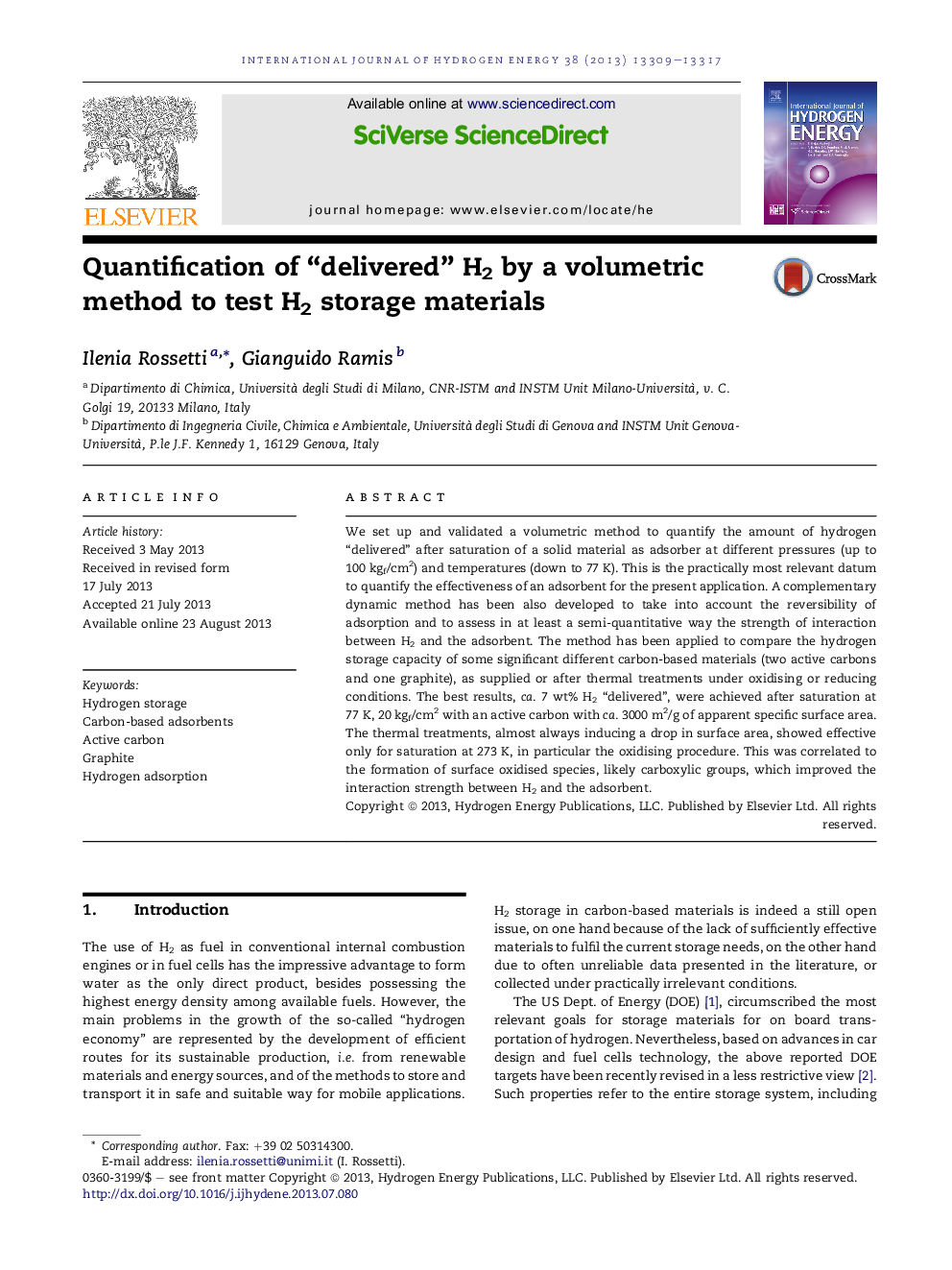| Article ID | Journal | Published Year | Pages | File Type |
|---|---|---|---|---|
| 1273336 | International Journal of Hydrogen Energy | 2013 | 9 Pages |
•Quantification of “delivered” H2 after saturation up to 100 bar by a new volumetric method.•Comparison of the H2 storage properties of different C-based materials.•Study of the effect of thermal treatments on H2 storage capacity.•Best result: ca. 7 wt% H2 delivered after saturation at 20 bar, 77 K.
We set up and validated a volumetric method to quantify the amount of hydrogen “delivered” after saturation of a solid material as adsorber at different pressures (up to 100 kgf/cm2) and temperatures (down to 77 K). This is the practically most relevant datum to quantify the effectiveness of an adsorbent for the present application. A complementary dynamic method has been also developed to take into account the reversibility of adsorption and to assess in at least a semi-quantitative way the strength of interaction between H2 and the adsorbent. The method has been applied to compare the hydrogen storage capacity of some significant different carbon-based materials (two active carbons and one graphite), as supplied or after thermal treatments under oxidising or reducing conditions. The best results, ca. 7 wt% H2 “delivered”, were achieved after saturation at 77 K, 20 kgf/cm2 with an active carbon with ca. 3000 m2/g of apparent specific surface area. The thermal treatments, almost always inducing a drop in surface area, showed effective only for saturation at 273 K, in particular the oxidising procedure. This was correlated to the formation of surface oxidised species, likely carboxylic groups, which improved the interaction strength between H2 and the adsorbent.
